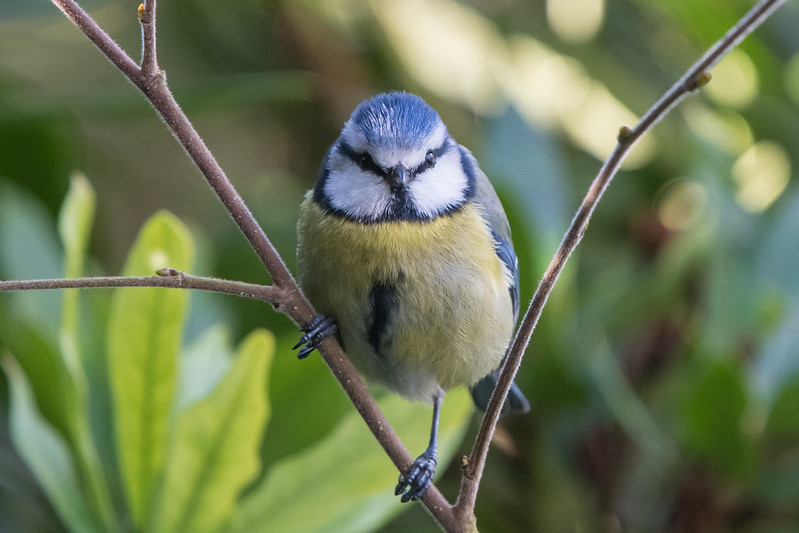
I’ve written quite a bit already about Great Tit song – but Blue Tits sing too.
Although it’s a song that sounds very much like an extended call – no-one would call this a great song. It’s a good job that Blue Tits look so cute, isn’t it?
Here are three examples. The first from Spain (or actually a part of Spain that wouldn’t like to be called Spain, Catalunya);
And one from Switzerland:
And one from the UK:
They all sound much the same to me. The song of the Blue Tit wouldn’t get into my ’50 Favourite UK Bird Songs’ list but the bird itelf is very cute to look at.
[registration_form]
‘… a rhythmic little high-pitched song will suddenly pierce the traffic noise of the Strand, like a piccolo ringing out over the orchestra in a brief solo phrase.’ So wrote Rosemary Jellis in the first page of her very readable, yet scientific book, Bird Sounds and Their Meaning (1977).
No, surely the Blue Tit is the most musical of all our titmice? The song, ringing like a tiny silver bell, is reaching peak output now (week 16). But weeks 5 or 6 have even bigger peaks of song – may be this is a crucial time for pairing.
Blue Tits also do something very odd with their song. In some years they use it as a way to signal to Sparrow Hawks, ‘We’ve seen you, so there’s no point trying to hunt here’. Well that’s the theory but it could be old rubbish now. Anyway, listen out for a sudden chorus of singing and then look up and around for a hawk gliding in at just above treetop height searching for the best line of attack. If you see nothing, it might be that the tits have mistaken a certain type light aircraft for an approaching raptor! OK, lads we all make mistakes. But check this: the chorus can be so intense and dense that it seems more than likely that female Blue Tits are singing and signalling too.
This behaviour has not been witnessed here for about ten years and yet there has been no great shortage of Sparrow Hawks. The most likely explanation seems to be that there have been no individuals (probably males?) specialising in regularly preying on Blue Tits. That said, it’s all quite puzzling.
But at least there are a lot of fine raptor experts around on this blog – it would be great if one or more of them glided in to put things straight…
murray – many thanks. Well our Blue Tits still use that ‘song’ to signal Sparrowhawks – I hear it quite often. That’s one of the reasons that I described it as more of a call than a song in some ways. I’m not sure I have noticed it being a chorus but as everything goes quiet, which usually does mean a Sparrowhawk, then the last thing one hears is often a rather loud Blue Tit call. It seems that they use their song, or something very like their song, as an alarm call too.
Any time of the year but now a Blue Tit “song” would make me look up for a hawk. This time of the year it is usually just a singing tit not an alarming tit. A friend with better hearing than me once said there is a difference in the two, an alarming tit is slightly harsher and higher pitched than straight song, but if true I can’t tell the difference.
Paul – I don’t think I can – they are just louder, to my ears, when a=used as alarm calls.
Yes I thought that too but he was insistent the “calls” were different. May be we are right.
Paul – and maybe we are wrong! That seems to cover it.
I see they’re Cyanistes now, not Parus. It’s getting as bad as plant renaming.
Thanks Mark and Paul. Yes, I think the alarm song (if that’s the right term?– I’m not up with the literature) may be slightly different from the breeding song. So this is only from memory: – the introductory notes are louder and squeakier while the bell-like trilling ending is more drawn out. But it used to be the sudden onset of a chorus which would grab the attention more than any subtleties in song differences.
Occasionally, if stood in the right place (E.g. on one side of a small wooded valley) it used to be possible to hear Blue Tits opposite suddenly chorusing, one territory setting off another, in a rolling, undulating chain of song receding into the distance as pigeons scattered in all directions.
I monitor a couple of Sparrow hawk nest sites and regularly hear the Blue tits alarm call, they also do it if I accidentally flush a woodcock mistaking it for a hawk, no way can I distinguish between the different calls though, l put 19 nest boxes up 3 years ago in a small stretch of woodland, different size holes for different species, placed 75 to 100 yards apart, l was surprised that 17 were used entirely by Blue tits and that all succeeded in fledgling young, beautiful little bird it was rare it would be a hell of a sought after tick
Yes Merlin, i have noticed the thing with Woodcock alarming various species, especially Blackbird.
Thanks Mark for the series. The BlueTit immediately reminded me of the opening bar(s) of Beethoven’s 5th. That’s at least one song I’ll remember!